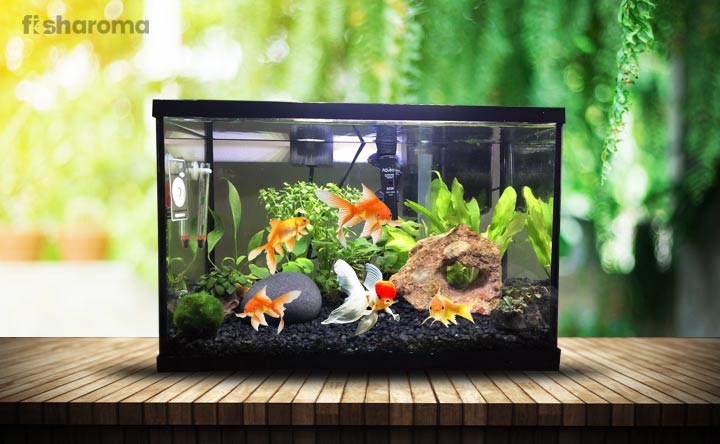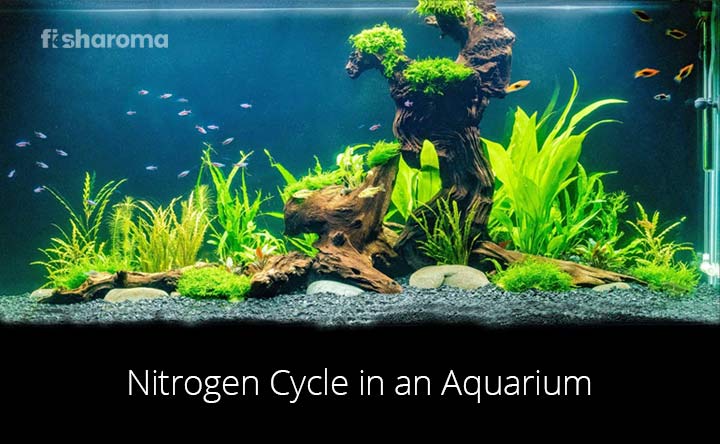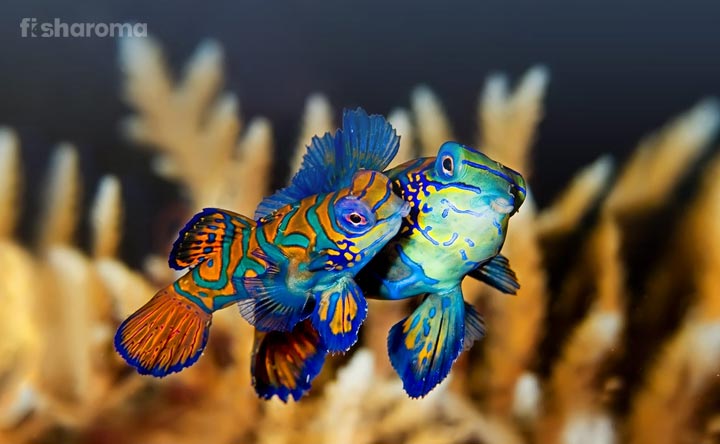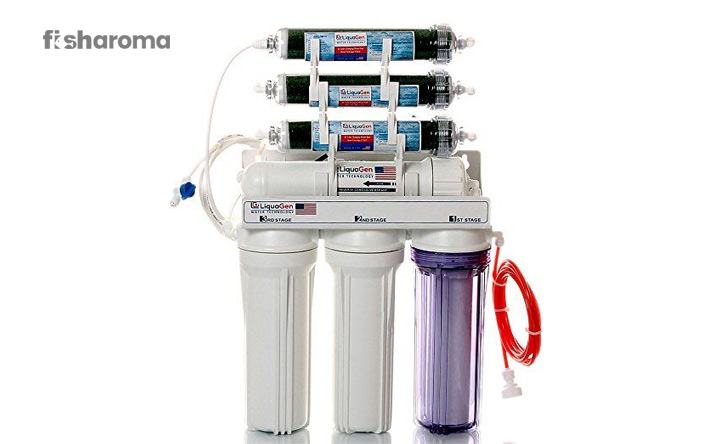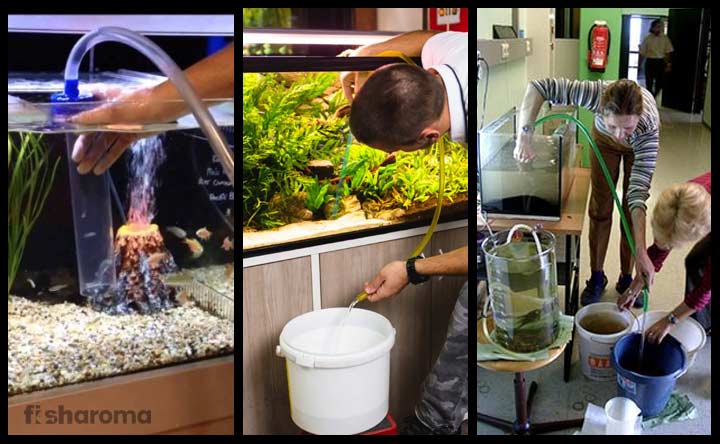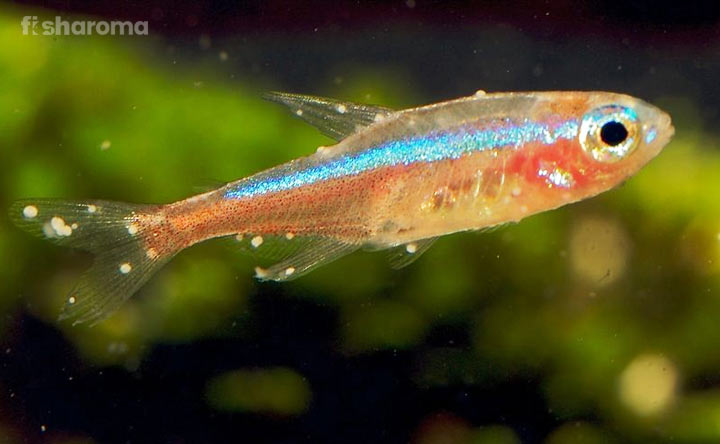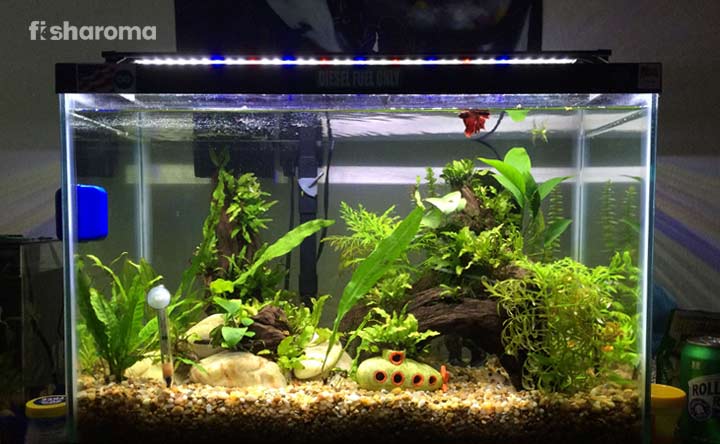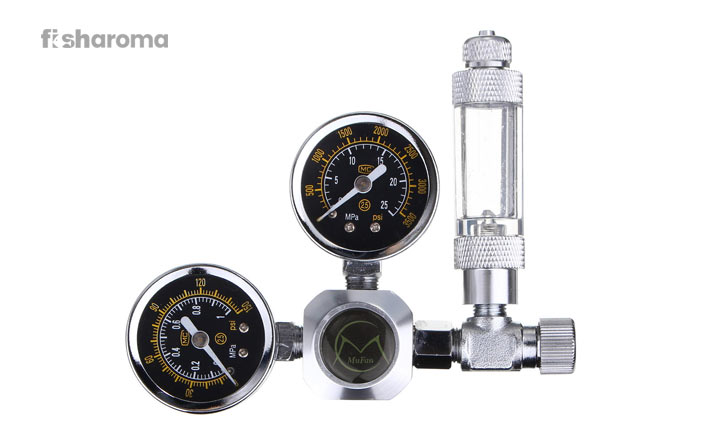20+ Beginner Aquarium Mistakes and How to Avoid Them
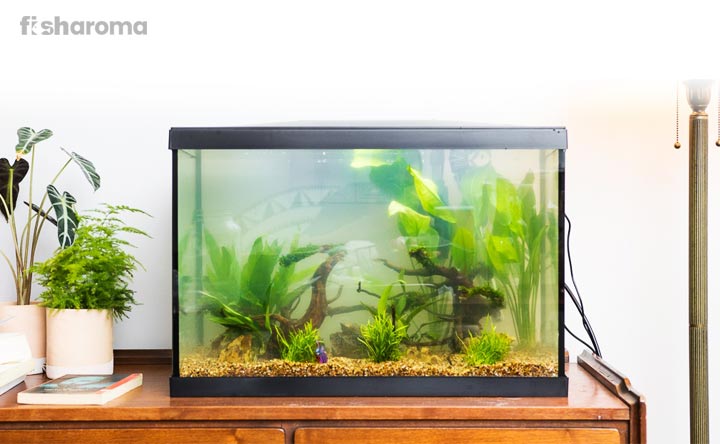
- 1. Wrong Positioning of the Aquarium
- 2. Buying a Small Tank
- 3. Choosing the Wrong Substrate
- 4. Being Unaware of the Water Type that Your Fish Needs
- 5. Not Using a Proper Filtration System
- 6. Not Using RO-DI Water
- 7. Not Using Apt Lighting System
- 8. Absence of Flora
- 9. Overstocking/Absence of Ornaments
- 10. Not Using a Tank Lid
- 11. Adding Fish to Your Tank without Cycling It
- 12. Not Quarantining New Fish
- 13. Not Allowing Your Fish to Acclimatise to the New Environment
- 14. Adding Too Many Fish Together
- 15. Keeping Incompatible Fish Together in the Same Tank
- 16. Adding Fish that may outgrow the Tank
- 17. Not Maintaining the Nitrogen Cycle
- 18. Accidental Poisoning
- 19. Overfeeding
- 20. Irregular Replacement of Water
- 21. Not Cleaning/Over-Cleaning
- 22. Leaving Your Fish to Your Neighbours While on Vacation
- 23. Not Having a Back-up Plan for Power Failure
- 24. Underestimating the Running Costs
- Summary
Dealing with living beings is hard as it is, but the level of difficulty increases when you are dealing with animals that live in a separate environment from yours. And that is the case with fish and other aquatic animals and plants whose life revolves around water. But that does not mean that you can’t host your favorite fish in your home. In other words, don’t let the fear of aquarium mistakes stop you from owning an aquarium.
All you need to do is follow a step-by-step guide of how to set up a fish tank and bear a couple of things in mind. However, despite following a thorough procedure, people tend to make rookie mistakes – mistakes that can be easily avoided. So, here we are to help you avoid those common aquarium mistakes.
Aquarium Mistakes & Their Solutions
Generally, the common aquarium mistakes arise from neglect, inexperience, and lack of knowledge. Sometimes, people tend to get so excited at the thought of petting aquatic animals that they can’t see the common mistakes in front of them. They are overshadowed by the overwhelming nature of having to care for new life forms.
Therefore, it is suggested to follow a system. If you view the probable mistakes and their solutions in a systematic manner, then chances of you avoiding them increase dramatically. The following is a list of 24 aquarium mistakes that you should try and avoid.
Wrong Positioning of the Aquarium
You can choose to keep the aquarium anywhere in your home as long as it fulfills the following criteria:
- Avoid direct sunlight since it raises the temperature of your tank and enhances algae growth.
- Keep it at a place where there is a nearby power supply so that you don’t have to use extended cords to bring power to your tank.
- Don’t keep the tank under a vent as dust from it will fall down to the water in the absence of a tank lid.
- Keep a gap of at least 5-10” (12.7-25.4 cm) between the tank and the walls so that the filter and other electrical cords can fit in easily.
- If possible, keep it near a water source so that you don’t have to carry water over a long-distance during water-replacement of the tank.
Well, it can’t be denied that the aquarium is also seen as a showpiece. So, feel free to display it anywhere you want where it won’t be affected too much by external temperature. It is all about balancing aesthetics and rationality.
Buying a Small Tank
In a small tank, the condition of the water changes rapidly, which means you would have to replace the water on a more regular basis than what you would have to do for a large tank. A small space results in all the organic wastes getting accumulated inside quickly, resulting in toxic elements are released in the water.
It is also difficult to fit aquarium equipment inside its cramped space without disturbing the free movement of the fish.
Do not buy a tank that holds less than 10 gallons of water if you are a beginner. Now, we are not asking you to build up a gigantic tank. But, starting with a 30-60 gallon tank is easier since it is relatively easy to maintain.
Choosing the Wrong Substrate
We recommend you to not go for brightly-colored pebbles or sand because usually, they contain artificial dye colors that are obviously harmful to your fish.
Pastel-based colored gravels usually reflect the natural habitat of the fish. Also, in gravel, try to use the medium-sized ones since the large ones tend to amass leftover food and organic wastes in them.
Fine-sized gravel should be avoided as well since it leads to water-stagnation at the bottom that leads to rot and algae growth. The type of substrate you pick – gravel, sand, clay, or others – will also be governed by the type of plants you want to keep inside.
Being Unaware of the Water Type that Your Fish Needs
The first order of business here is to find out whether the fish of your choice is a freshwater fish or a saltwater fish or does it prefer brackish water (a mixture of freshwater and saltwater).
For freshwater, you can just simply use tap water, although you need to add de-chlorinator to it. In the case of brackish and saltwater, you can either buy them from your nearest pet store or you can make them at your home. For this, you would need sea salt which you then have to mix well with the water to reach the desired saline level. Don’t forget to maintain the required water salinity
Next, the temperature of the water should be maintained round the clock. You can install a water heater inside or place a submerged thermometer in order to regulate the temperature of the water inside.
Besides, you also have to maintain a proper pH level and ensure the hardness of the water is appropriate for the fish and plants inside your tank. You can use buffers to change the acidic water to alkaline or vice-versa.
Not Using a Proper Filtration System
Generally, a ready-to-set tank comes with a filter of its own. The most common filter that is used in fish tanks is the 3-Step filter. It would work well for a beginner.
No matter how small or how large your tank is, you need a filtration system. The organic wastes, detritus, and the toxins have to be eliminated on a regular mechanical basis. Filters also help generate current in the tank water, which your fish needs. Based on the type of current that your fish needs, you can regulate the flow of the water in your tank.
Make sure that the filter in your tank turns the water at least five times per hour.
Aquarium filters are a long-term investment. So, it’s better not to be stingy here. There are various types of filters available in the market for you to choose from – Power Filters, Canister Filters, Under-Gravel Filter, etc. So, suit yourself!
Live plants function as natural filters for your aquarium since they help absorb the toxin and release oxygen back into the tank water.
Not Using RO-DI Water
The tap water that we use to fill our tank has a lot of components in it that are harmful to your fish such as Nitrates, Chlorine, Fluoride, Chloramines, Phosphates, and even metal coppers. Some homes even have old copper pipes that are extremely harmful.
RO means Reverse-Osmosis while DI means De-Ionised water. RO-DI water is the purest water that does not have any of the aforementioned elements present in them.
Letting your tap water run through an RO-DI unit will remove all unnecessary elements, thereby ensuring a healthy living condition for your fish.
Not Using Apt Lighting System
Having a proper lighting system is required for both the fish and the plants. Some species of fish prefer bright lighting while others prefer dim-lighting. The same goes for plants as well. So, you need to understand which plant will go well with which fish.
A number of fish species have poor eyesight. As such, they can’t eat without proper lights. In the case of plants, they require light for photosynthesis.
It is always better to select an automated lighting system that will stay on for 12 hours of the day and stay off for the rest of the day. This is because both fish and plants need a few hours in the dark to thrive. Besides, too much light leads to uncontrollable algae growth.
T8 and T5 fluorescent bulbs are ideal for aquariums. They are capable of growing plants.
The following table lists out the amount of light that different types of plants need to grow.
| Types of Plants | Amount of Light Needed |
| Low light plants | 0.25 watts/liter |
| Medium light plants | 0.50 watts/liter |
| High light plants | 0.80 – 1.0 watts/liter |
Absence of Flora
Presence of flora, i.e., plants is crucial not only because they help oxygenate the water, but they also minimize the nitrate level. Besides, they also help prevent the growth of algae because they eat the same nutrient as them.
The presence of a plant is more important in a freshwater aquarium. Please note that live plants will require more maintenance than artificial plants since they require regular trimming and a separate CO2 supply system.
If you want to use artificial plans, make sure it is made of non-toxic material and it doesn’t have any sharp edges that may harm the fish.
Overstocking/Absence of Ornaments
Aquarium ornaments refer to aquatic caves, rocks, driftwood, artificial corals and other decorative items that are kept in a tank. It is a false assumption that aquarium ornaments are used only for beautification purposes because they do serve as hiding spots for your fish.
Certain species of fish are shy in nature. Some prefer hiding in nooks and/or corners because that is how they hunt in the wild. In some species, the females need to hide from the males to avoid aggression during mating.
Driftwood and peats help in turning the neutral pH level into acidic pH level.
Therefore, the presence of these ornaments is essential. However, much like artificial plants, the ornaments in your tank must be non-toxic and should not have sharp edges.
Another aspect that you should keep in mind here is that you must avoid frequent re-arranging of the tank.
Not Using a Tank Lid
Various species of fish are known for jumping and leaping out of the water. Some species of shrimp and turtles are known to escape the tank. So, unless you want to see your expensive beautiful fish on your floor next to your feet, use a lid for your fish tank.
Make sure there is at least 3” (7.6 cm) of space between the water surface and the tank lid since certain species of fish rise to the surface of the water to breathe.
Adding Fish to Your Tank without Cycling It
Aquarium cycling refers to the process of letting the water in your aquarium mature so that it becomes liveable for the fish.
For the sustenance of life inside your tank, beneficial bacteria need to grow and thrive. They help get rid of the toxins from your tank that may harm the fish and aquatic plants. These bacteria break down the ammonia and nitrates and make the water clean. Generally, it takes somewhere around 3-6 weeks (based on the size of your tank) for the whole cycling process to get complete.
You may be tempted to add ammonia neutralizing additions to fasten the cycling process, but let us warn you against it. It is a terrible idea to do it during the cycling stage. The ammonia that is present in your tank is needed for the growth of beneficial bacteria.
However, you can take the help of liquid ammonia for your brand new tank, since it will accelerate the cycling process in a healthy manner. Liquid ammonia is available both in liquid and pulverized form and you can use either of them. But, just remember that liquid ammonia works only in a new aquarium.
Not Quarantining New Fish
When you buy a new fish from your pet store, the chances of them carrying parasites or other diseases is pretty high. By directly introducing the fish to the tank, you are leaving other fish, plants and the whole water in your existing tank vulnerable. Therefore, quarantining your new fish is extremely vital.
Apart from the contamination factor, you also have to understand that the new fish that you have brought home may be stressed from transportation and because of the new environment. Therefore, give your new pet time to adjust.
You should ideally keep your new fish in quarantine for 2-4 weeks. The quarantine process takes place in a separate tank or small tub (5-gallon for a small fish and around 15-gallon for a large fish).
For your sick fish, you can use antibiotics or other heavy medication in the water of the quarantine tank, thereby not endangering the ecological cycle of your main aquarium. Unnecessary treatment of existing healthy fish for the sake of your new (and probably sick) fish will lead to weakening them.
Remember, the quarantine process should apply to aquarium equipment as well.
After the quarantine process, introduce your new fish or re-introduce your old fish to the tank following the same procedure mentioned in our next point.
Not Allowing Your Fish to Acclimatise to the New Environment
As we have mentioned in our previous point, whenever you buy a new fish for your aquarium, you have to understand that the fish is stepping into a foreign land. Therefore, we have to let them get acclimatize to their new environment first.
After the quarantine process, take the fish in a non-toxic transparent bag filled with water. The water should have the same feature as of the water in the quarantine tank that the fish came from. Dim the light of the main tank and float the bag in it for 15 minutes so that its temperature becomes similar to the main tank’s water. Then, open the bag and pour some water from the main tank into it and repeat it every 10 minutes. When you see your fish reacting normally to it, release the fish into the water.
Follow this same procedure when putting your new fish to the quarantine tank as well. Slowly and steadily, try to convert the condition of the water of the quarantine tank into the water of the main tank. This is because it will help the new/sick fish get used to the water of the main fish tank.
Adding Too Many Fish Together
If you end up introducing a bunch of fish altogether in a tank, it can cause stress to them, destabilization of the water chemistry and may stall the nitrogen cycle.
Besides, there might be territorial fights among them and you may get overwhelmed with the amount of waste that is produced on a daily basis, which means more cleaning from your part.
Introducing one or two fish at a time is ideal unless it’s a schooling fish, which needs to be introduced in groups of at least five. There is a golden rule of thumb that recommends that you should put one inch of fish per gallon of water. Try and follow it!
Keeping Incompatible Fish Together in the Same Tank
Unless you are a sadist and enjoy watching your fish killing each other off, or worse, eating each other, you better not put incompatible fish together, no matter how good they look together.
Based on temperament, fish can be categorized into three categories:
- Aggressive – Siamese fighting fish, Rainbow Shark, Bala Shark, Jewel Cichlid, Tiger Barb
- Semi-Aggressive – Angelfish, Oscars, Clownfish, Gourami, Black Skirt Tetra
- Peaceful – Neon Tetra, Fancy Guppy, Zebra Danio, Platy, Hatchetfish,
It goes without saying that you can’t put an aggressive fish with a peaceful fish or even with another aggressive fish. A lot of fish are territorial in nature. They don’t like anyone else invading their space and they become extremely defensive when they feel such a situation may arise.
Adding Fish that may outgrow the Tank
If you are using a small or medium tank, you will often see that small fish, when they grow up, face difficulty in finding space inside the tank. They are unable to move and swim freely without bumping into the tank wall, which leads to physical injury as well as stress in them.
Species like Oscars, Plecostomus, Catfish, among others often grow rapidly. So, unless you have a larger tank to shift them into when they get bigger, it is better to do a study on the length of fish in their adult form before buying them.
Not Maintaining the Nitrogen Cycle
If you misjudge the nitrogen cycle, it may kill off your fish. When there is an irregularity in the nitrogen cycle, due to the lack of beneficial bacteria, it results in a build-up of ammonia that can be lethal to your fish.
The build-up of the ammonia takes place from the fish wastes. The beneficial bacteria break down the ammonia to nitrite. They further break down the nitrite to nitrate since the former is also toxic. When the level of nitrate spikes up, you need to change the water since nitrate can’t be broken down by these bacteria.
You should check the nitrate level of your water every week and make necessary changes in the water when required.
Accidental Poisoning
There are numerous ways through which you can accidentally poison the tank’s environment. Sometimes, you won’t even realize what action of yours will lead to poisoning.
Some common causes of poisoning are:
- Leaving waste products and leftover food unattained in the tank.
- Failing to understand the nitrogen cycle of the tank.
- Using soap-based or other chemicals to clean your tank.
- Using too much medication in your tank.
- Turning off the filter for a prolonged period of time.
In most of these cases, the oxygen level gets disrupted. This leads to the creation of a toxic environment inside the aquarium.
New users tend to use a lot of chemicals to prevent illness and to stop the growth of algae. Such a situation not only kills the harmful parasites and bacteria but also eliminates the beneficial bacteria that are needed to maintain an optimum level inside the fish chamber.
Furthermore, the cleaning method of the tank can also lead to poisonous results. Never use soap-based items, detergents or any other chemicals to wash your fish tank. They leave their residues behind (which are untraceable by naked eyes) that ultimately kill the plants and fish.
Overfeeding
Overfeeding leads to constipation, which can be deduced from their swollen eyes and puffed up stomach. Constipation is also one of the biggest reasons for death in aquarium fish. Besides, it will lead to more and frequent waste products that ultimately mess up the nitrogen cycle.
The biggest obstacle here is that most fish tend to appear hungry and given the opportunity, they will eat more than they should.
A good rule of thumb to be followed to avoid this aquarium mistake is the ‘Two-minute feeding cycle’. What you need to do is provide that much portion of food that you think your fish can eat within two minutes. After two minutes, whatever food is left, just simply remove it from the tank.
Irregular Replacement of Water
There has to be regularity in the pattern of your water change. Remember, you should never change all of the water at once. This is because of two basic reasons. The primary reason is that removing all of the water will kill all the essential bacteria from the water and secondly, it will be extremely difficult for your fish to adjust to the new climate all of a sudden.
Try to replace the water in your tank by following this table:
| Percentage of Tank Water to be Replaced | Time Interval |
| 30% | Monthly |
| 15% | Fortnightly |
| 5% | Weekly |
It is easier if you use a siphon to extract the water from your tank since it will also help in cleaning the gravel. All of the fish excrement, waste materials and uneaten food that settle down at the bottom of the tank in the gravel will get cleaned up if you use a siphon.
The new batch of water that you add to the tank should have the same temperature, pH level, hardness, etc, as that of the existing water in the tank.
Not Cleaning/Over-Cleaning
It is rare to find someone who strikes a perfect chord between becoming an under-cleaner and an over-cleaner. This is one of the most frequent aquarium mistakes committed by beginners.
Under-cleaning your tank will result in the growth of algae as well as the build-up of toxic elements, while over-cleaning will eliminate all the essential nutrients from your tank. Needless to say, neither situation is ideal.
As we have stated above, avoid using soap-based products, detergents and harsh chemicals for cleaning the aquarium. Use only lukewarm plain water for cleaning the pebbles, ornaments, rocks, caves and other items. For cleaning the tank walls, use a soft cloth to wipe off the residue of dirt and algae.
Try to clean your tank at least once a month. If there are a lot of fish in your tank, then try cleaning it every 15 days. While the cleaning procedure is going on, keep your fish in a bucket along with the 70% of the tank’s water. Changing all of the water, as we have mentioned above, is harmful to your fish.
Leaving Your Fish to Your Neighbours While on Vacation
Now, before you jump into a conclusion that we are recommending all fish-owners to never take a vacation or carry their aquarium wherever they go, give us time to defend ourselves.
No, you can take vacations. But you need to realize that you are leaving behind living beings at your home. So, there has to be someone who would be interested and knowledgeable enough to take care of your fish.
If the care-taker overfeed them or forgets to feed them or tease them with a stick or something, it won’t end well for your fish. So, pick a reliable source for taking care of your fish.
Not Having a Back-up Plan for Power Failure
Another common aquarium mistake involves the power supply. A power outage or a filtration failure can lead to fatal conditions for your fish. In such a situation, transfer your filtration media with your spare filter.
The best part is that you don’t have to spend a fortune on having a back-up system. You can rely on a cheap heater, a simple air pump, and a second-hand external filter, all of which will come under a total cost of just $30. Consider this as an insurance policy for your fish.
Underestimating the Running Costs
The running costs for maintaining an aquarium can be overwhelming and often is the reason for people quitting their aquarium. It includes costs for electricity, lighting, food, medicine, equipment, and then some.
Frozen and live foods are expensive. Buying prawns, shrimps, and mussels for your fish will burn a hole in your pocket.
On average, you would have to spend around $125 annually for a medium-sized freshwater aquarium while the cost rises up to $300 for a saltwater aquarium. Therefore, having a budget plan is essential. You need to figure out if you can actually afford an aquarium in the long-run.
Summary
Overall, if you follow the aforementioned points, you will find that your aquarium is healthy and life inside it is thriving. It may seem intimidating at first, but following these points, one-by-one will make the process much easier for you. So, with every aquarium mistake now avoided, you are good to go to have your own aquarium.
Take a Look into our other Fishkeeping Guidelines
Take a look into our other fishkeeping guidelines that will improve your skills as an aquarist:
- What Size Fish Tank Should I Get: Based on your preferences of the kind of fish you want to keep and your overall fish-keeping experience, we help you choose the apt size of tank for you.
- How to Set-Up a Fish Tank: Setting up an aquarium for the first time? We list out the necessary steps you need to take for ensuring your first experience of fish-keeping is also your best.
- Things You Shouldn’t Put in a Fish Tank: It’s a great idea to decorate your fish tank. But what are the items that you have to avoid keeping in a tank that may jeopardize the health of your fish? We provide a list of the same for you.

